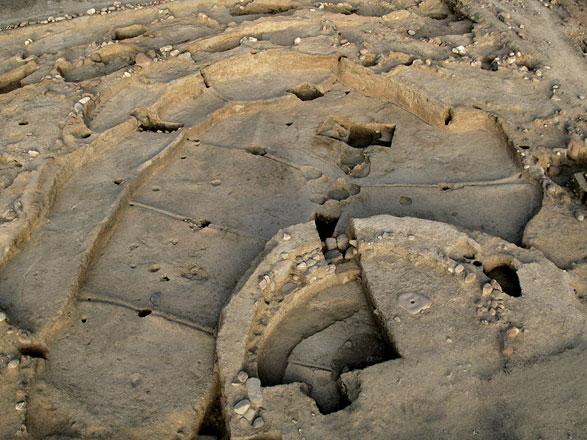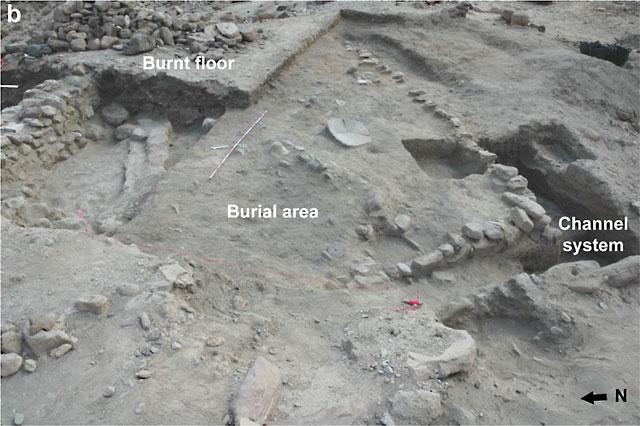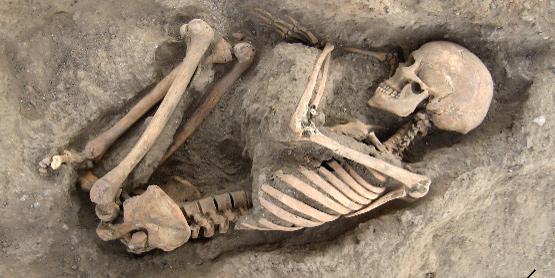You are here
Unprecedented Neolithic discoveries at Wadi Faynan by British archeologists
By Saeb Rawashdeh - Jul 25,2024 - Last updated at Jul 25,2024

A large amphitheater-like structure was constructed at WF16, most likely for communal activity, perhaps singing, dancing and ritual (Photo courtesy of Faynan Heritage)
AMMAN — Two British archaeologists, Steve Mithen and Bill Finlayson studied the early Neolithic site of Wadi Faynan, situated some 250 kilometres south of Amman.
Some structures in Wadi Faynan were used as workshops, others for storage or grinding of foods and pigments. Structure O75 is of an unprecedented form in the Neolithic archaeological record. While the functional role of this structure remains unclear, it provides further evidence that changes in social organisation —notably the appearance of communal activity, collective labour and ideology manifest in art and architecture — preceded that of economic change within the Neolithic transition process, Mithen outlined.
"Moreover, contrary to recent proposals that the Neolithic ‘originated’ in a so-called ‘Golden Triangle’ of Upper Mesopotamia, this new discovery at WF16 indicates that socially-driven Neolithisation was widespread within south-west Asia at the very start of the Holocene," Finlayson said, adding that the initial stages of the Neolithic transition in south-west Asia are denoted as the PPNA cultural phase (9,750–8,550 BC).
The PPNA settlements show significant similarities to those of the Epipalaeolithic in terms of having sub-circular structures and no traces of domesticated plants and animals. The PPNA is followed by the Pre-Pottery Neolithic B (PPNB) cultural phase (8,750–6,300 BC) when rectangular, two-storey buildings and domesticated sheep, goat and cereals are gradually developed and adopted.
WF16 is located on two adjacent knolls in Wadi Faynan, at the base of the escarpment leading to the Jordanian plateau. It is around 500 metres from the PPNB settlement of Ghuwayr and 2 kilometres from the Pottery Neolithic site of Tell Wadi Faynan, Mithen noted, adding that the site was shown to have stratification more than 2 metres deep, good preservation and a rich cultural inventory.
"Several sub-circular stone and walled structures containing domestic debris, grinding stones and human burials were exposed, and stone and bone artefacts with incised designs were recovered, along with anthropomorphic figurines and a diverse range of stone and shell beads," Finlayson said.
Architecture indicative of communal activity and sometimes of a monumental nature is not unknown from the PPNA –a tower and wall were found in Jericho in 1950’s by Katleen Kenyon.
The floor of the WF16 structure in Wadi Faynan covers more than six times that of the so-called "monumental" buildings at Jerf Ahmar (Syria) dated to 9,650–8,610 BC, Mithen underlined, adding that similarities with the Jerf Ahmar buildings are found in the intentional deposition of animal skulls and decorated benches, the latter having been previously cited as a uniquely Upper Mesopotamian PPNA phenomenon.
"Although the ubiquity of naturalistic animal motifs at Jerf Ahmar and Gobekli Tepe is not replicated at WF16, animal imagery is present. This is rare, however, the dominant symbols being primarily abstract and anthropomorphic in nature," Finlayson underlined, adding that the function of Structure O75 at WF16 remains unclear.
Whatever it had been used for, its size and form suggest communal activity for its construction, use and repair, Mithen said, noting, "The two cup-hole mortars set within the floor suggest the collective grinding of plants or some other material; the deposition of broken stone bowls and goat/ibex bones suggests feasting, while its scale, decoration and tiered benches imply ritual or at least performance activities."
Structure O75 and its associated buildings demonstrate that new forms of social organisation, manifest in architecture and settlement design, occurred in a significantly wider region than Upper Mesopotamia at the start of the transition to the Neolithic, Finlayson concluded.
Related Articles
AMMAN — Sharara is a Neolithic settlement located 10 kilometres east of the southern tip of the Dead Sea, in Wadi Hasa, and provides a route
AMMAN — The earliest human burials found in Faynan, some 140km south of Amman, come from the early Neolithic site of WF16 and date back to 1
AMMAN — The region of Wadi Faynan represents an economic potential and archaeological asset for Jordan, said Professor of Archaeology Steven














